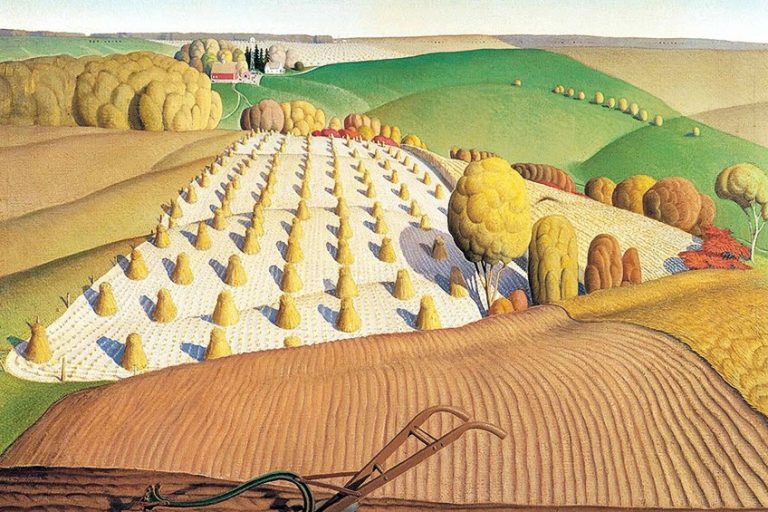Notan – Exploring Notan Designs and Notan Art Examples
Many artists try to compose harmonious and balanced paintings, which ultimately affect the artwork’s reception and capture the viewer’s attention. There is one such strategy that many artists employ and has been outlined by the Japanese term Nōtan, which involves studying the massing of tones of different values and applying it in your creative process. The assessment of the quantity of light in a painting is key to conjuring balance and harmony, and is an excellent strategy that every artist should learn more about. In this article, we will unpack this abstract design concept by reviewing what it is, the difference between a value study and a Notan study, and how to create Notan studies. Keep reading for more about the principle of Notan!
What Is a Notan?
The term Nōtan is pronounced “no-tan” and refers to a Japanese word, which signifies a harmony or balance between light and dark values, which you use to build the structure of your painting. In this article, we will explore the design concept of Nōtan as it is widely understood today, as Notan. To understand the original meaning of the concept, it is useful to unpack the Japanese term Nōtan and its meaning. The arrangement of dark, light, and gray colors creates an effect or sense of beauty. The concept was derived from the Japanese words “Nong”, which translates to “strong” or “concentrated” and “Dan”, which translates to “weak”.
This brings us to the meaning of “Notan”, which accurately translates to “concentrated” or “weak”.
The reference between dark and light means the measure of light that is reflected or the grouping of different tonal values. So, the term “Notan-beauty” signifies a harmony that results from a combination of dark and light spaces, irrespective of color, in pictures, nature, or buildings.

Notan is the representation of identifying patterns of dark and light, and a sound Notan drawing can bring the full range of your subjects’ values into a white and black design, where the black represents areas in the shadows and the white depicts areas that are directly in the light.
Color is not at all considered in a Notan drawing since the value of any dark-colored shape situated in strong light will always translate as a light value.
In any form of Notan artwork, dark and light need one another to exist, in the same way, that you cannot have a positive space without also having a negative space and vice versa, this is clearly illustrated in the symbol form of yin and yang.
What Is Meant by a Notan Design?
The term “Notan design” refers to the process one uses to map out the dark, light, and gray areas in a painting. When you create a Notan design for your painting, it is not important how many colors you are going to use; with the Notan design, your painting will still produce a strong effect. The Notan design is a fundamental value structure for your painting.
Let us now consider, in more detail, what a Notan design is and how you can use it in your own Notan artwork.
A Notan design is a practice that encompasses painting with white and black for light and dark. This also signifies what is known as a two-value Notan. Sometimes you can make use of gray that has an intermediate value and is referred to as a three or four-value Notan, however, the four-value Notan is purely a value study.
Notan design refers to the fundamental value structure of your painting and was referenced by Arthur Wesley Dow in his book titled Composition: Understanding Line, Notan, and Color (1889), as the three main elements of composition design.
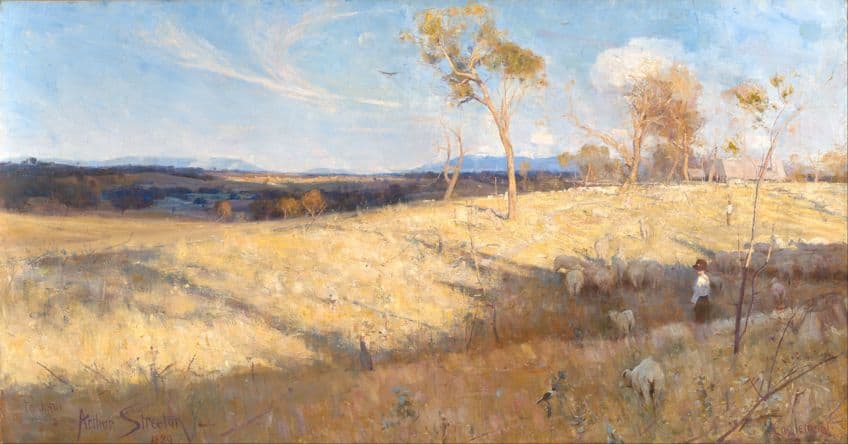
You can build your painting using a strong Notan design, but it is not essential as you can still create an amazing painting without the use of a Notan design. By choosing to leave out Notan design in your process, you would have to rely on some other visual elements such as composition, color, saturation, and brushwork instead. What features make a strong Notan design? There are a few key features listed below that contribute to making a strong Notan design in painting.
- The first feature is strong value groups, which means light and dark values are grouped and are not scattered all over the place. Sir Arthur Streeton’s painting Golden Summer Eaglemont (1889) is an excellent example of this feature.
- An organic design means more natural patterns that can be irregular in form and is not defined by straight lines and edges.
- There is a pattern creating dark and light, you will see an image emerge in a two-value Notan designs.
- Dark values are balanced against light and one value does not overbear another. This means there is not too much black or white.
What Is Meant by a Value Study and a Notan Study?
A value study and a Notan study are completely different ideas. Remember, that a Notan study is not the same as the value structure of a painting, which is a vital point. Let us take a closer look at these two different study types.

A Value Study
A value study is simply the opposite of Notan, as it assists you in planning your painting from a more realistic point of view and is entirely dependent on the subject matter. Therefore, all color values in this type of study need to be completely accurate to all the actual values that can be seen in your painting.
Essentially, a Notan study assists you in planning your painting from an abstract or theoretical design perspective, while the value study assists you in planning your painting from a more realistic point of view.
A Notan Study
A Notan study is there to assist you in planning your painting using an abstract design viewpoint, which is independent of any subject. This means that the values in the Notan study are not representative of any actual color values that you can see in your painting.
How to Produce a Notan Study
The object or idea of a Notan study for your art piece is not about your skill with a paintbrush but is mainly a tool to assist you in designing your painting. Below are a few different ideas you can use to produce a Notan study.
- You can use the editing programs on your computer to simplify the values and characterize the image.
- You can make use of black and white paint, which could be acrylics, watercolors, or oil paints.
- A study could also be produced by using some light and dark-grade pencils.
- Another simple method is to use some black markers.
Notan drawings were originally created using a brush, brush pen, and ink. The measure of water you add changes the intensity of the pigment. A brush pen can give you a variety of marks, so by using a fine tip, you can draw more detail, while a thicker brush pen can help you cover more surface area and assist you with abstract works.

If you are a beginner, it may be difficult at first to decide which part you need to leave white and which part needs to remain black. In a Notan study, it helps to first use a photograph, where it is easier to see the difference between dark and light. As you improve, you will notice it gets easier to see the contrast in the image. To begin, try to spot the darkest section that you can see and draw those first. Then, when you get to the tricky mid-values, it is easier to see if you should join the black and leave the white.
It is common for many artists to jump straight into the painting and then work out the details as they go, however, it is always best to plan the painting before you begin.
This is where the drawing of a Notan study becomes useful, as you are not concerned about details, rather you are establishing the more important elements. The three Japanese Notan studies or value studies can become very helpful in guiding you to create a powerful and convincing composition. By simply examining any scene with the simple values of Notan makes it obvious what will work and enhance your painting.
Creating a Two-Value Notan
When you create a two-value Notan study, you can make use of the color white, such that you can see areas that are affected by direct light. You can also use the color black to pinpoint areas that are not affected by direct light. It could be difficult in cases where you have a black suit or a white dress, but even in such situations, white dresses that appear in a shadow may look darker than black suits, which are cast in direct light.
A two-value Notan study is ideal when you have objects that have large shapes and simple value structures, similar to those found in Claude Monet’s painting “Etretat, Cliff of D’Aval, Sunset” (1885).
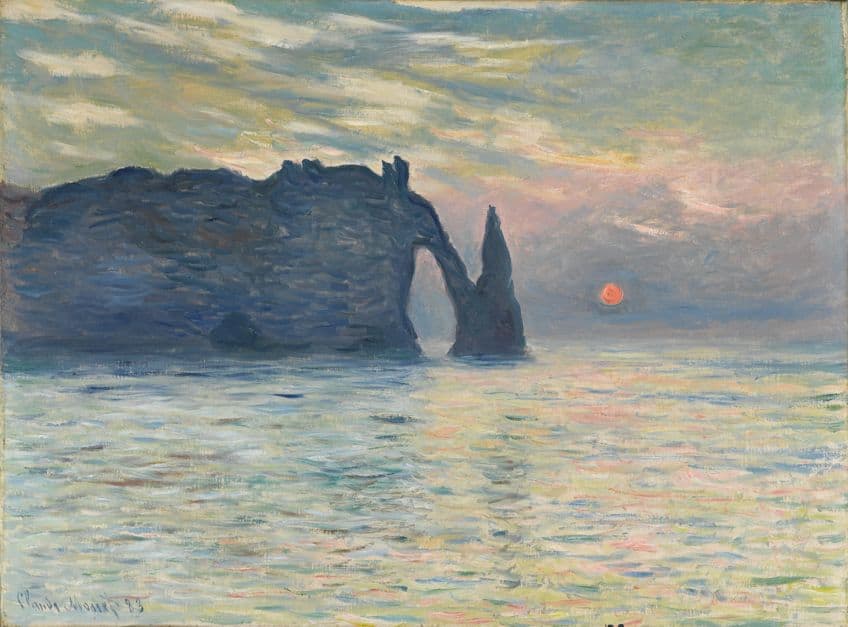
Other Notan art examples include a painting that has a very strong value composition and can easily be identified by a two-value Notan study. These include famous works such as the portrait by Giovanni Boldini titled Girl with Black Cat (1885). In this two-value Notan study, Boldini provides enough information about the subject by solely making use of black and white values. He skillfully grouped the dark and light tones to build a strong foundation on value; however, this may not be apparent at first sight.

Another example of a two-value Notan is found in James Whistler’s painting Whistler’s Mother (1871). Here, you will notice a very simple Notan study, as there is very little detail and all you have is dark and light elements. A common mistake many artists make is putting too much detail into their Notan studies, which causes them to miss the whole point of what a Notan study encompasses.
The painting by Ilya Repin, Girl with Flowers, Daughter of the Artist (1878), is also a simple two-value Notan study since it eliminates almost every detail and selectively reveals a strong composition of dark and light.
In many paintings, the Notan design has a dominant feature containing a strong arrangement of dark and light elements, whereas in other paintings, this feature is less influential and produces a weak Notan design.
More Nōtan art examples of a weak Notan design can be found in the painting by Claude Monet, The Entrance to Giverny under the Snow (1885), as there is no balance of dark and light elements.
Creating a Three-Value Notan
Usually, a two-value Notan should suffice but at certain times, a painting may possess a distinct mid-tone element that is easy to overlook when you make use of white and black alone. This is where a three-value Notan comes in handy and gives your painting a more refined and stylish value structure. This means you have more information regarding the subject, which then makes the fundamental Notan design less obvious.
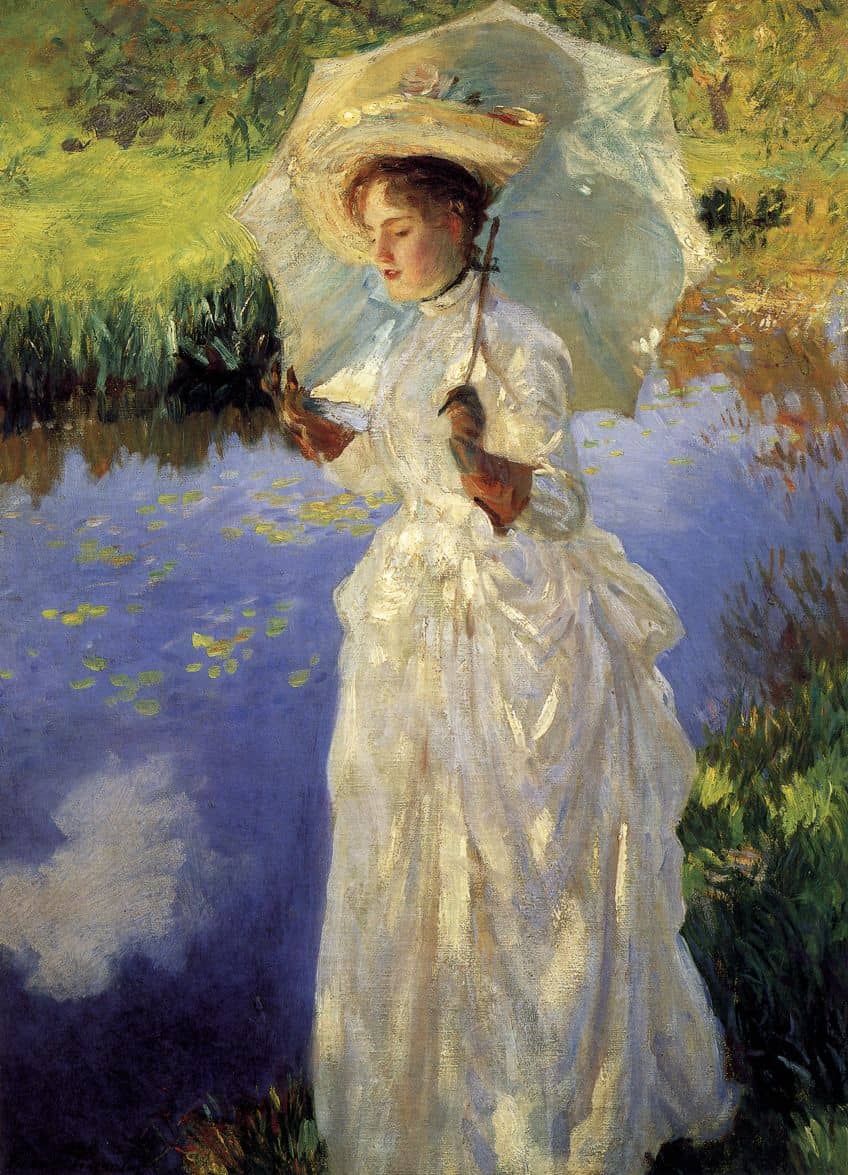
The painting by John Singer Sargent, Morning Walk (1888), is an excellent example of the three-value Notan design as it possesses a clear definite light mid-tone with a dark element, where a third value structure is very useful in capturing the mid-tones.
Creating a Four-Value Notan
When you encounter subjects with four or more distinct value groups, then a four-value Notan study can be used. The four-value Notan study makes use of black, white, dark gray, and light gray hues. Remember, that if you make use of more than four values, you will be creating a value study and not a four-value Notan study. A Notan study focuses more on the design and abstract shapes that are created with a balance between dark and light, and a value study captures the extensive and complete range of values, such that it is more realistic.
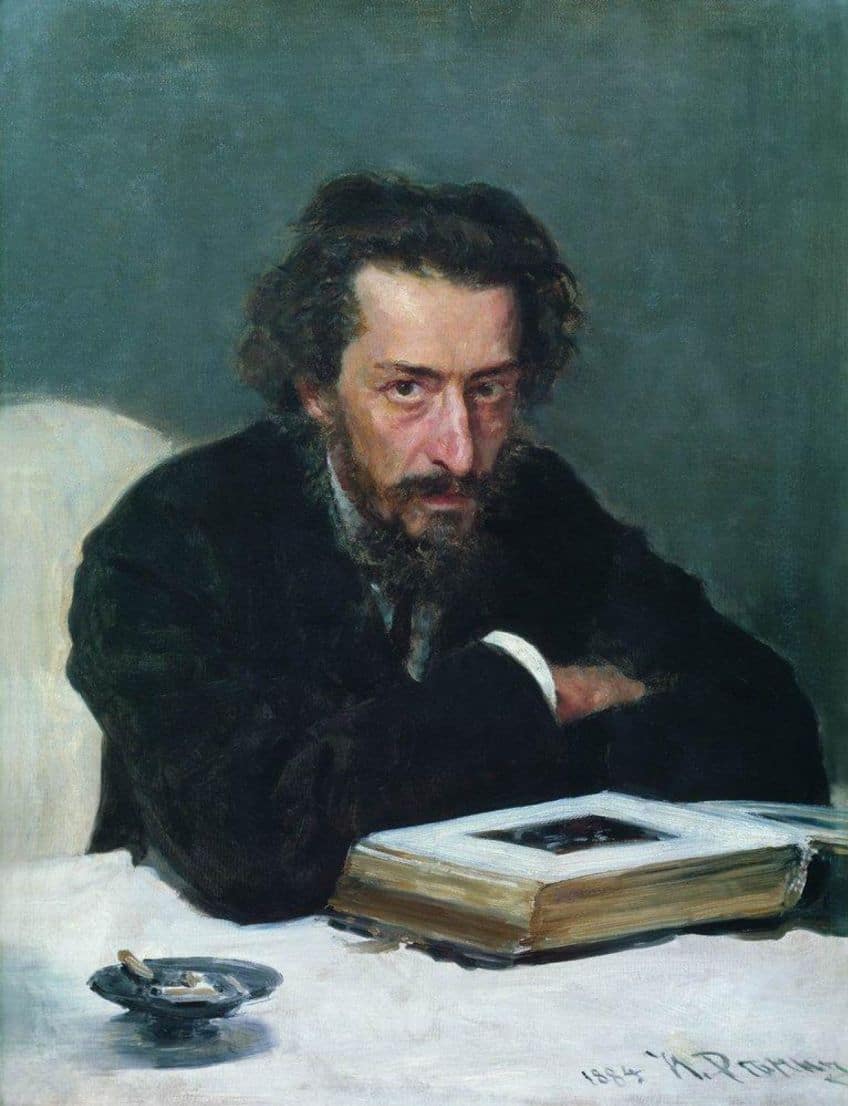
Some Notan art examples are found in the painting by Ilya Repin, Portrait of Composer, and Journalist Pavel Ivanovich Blaraberg (1884), which is best when using the two, three, and four-value Notan studies to demonstrate the differences between all the Notan values. In this case, the four-value Notan study is more useful since it captures more details.
The two-value Notan captures less visual information and ignores the mid-tones of the painting, while the three-value Notan value study secures the mid-tones. On the other hand, the four-value Notan study is more suitable since it captures the dark and light values, as well as the mid-tone elements.
Can a Notan Study Improve Painting Skills?
With a Notan study, you can quickly see what design will work for your painting, as it helps in deciding the arrangement of various shapes. If you have small and large shapes in your image that are not properly grouped, the black and white values make it easy for you to regroup them into their proper order.
This means that you can remove the smaller images and equips you with a stronger balance. You can also begin to see interesting patterns emerge. The Notan study is a major contributor to balancing dark and light, as well as looking at patterns and shapes in your image to help you to see the painting’s overall structure.

However, it is not always evident to see the balance of dark and light at first glance, as many other elements such as brushwork and color are also competing to attract your attention. The Notan study helps to filter out all other elements so that you can easily see the balance between the dark and light areas. In other words, a Notan study symbolizes the very basic abstract design of your painting. Ultimately, a Notan study is simply another tool or method you can use to improve your painting skills.
Remember that as a beginner, you may experience some difficulty with your Notan drawings but as you persevere, you will soon develop a more natural inclination toward Notan. Artists use different mediums, tools, and brushstrokes, but they all have the same goal, which is to produce a great painting, and with the use of a Notan study, this is more likely to be achieved.
Frequently Asked Questions
What Is Notan Artwork?
Notan artwork is defined as the framework or pattern of dark and light colors, where the value structure of a painting is created using a balanced approach to color. Notan designs explore various arrangements of dark and light elements and can be used effectively in painting. A Notan design is the fundamental value structure of the painting in its simplest style.
How Significant Are Notan Designs?
A Notan design is of great significance since it is the fundamental building block for the painting design. It is very important to have a strong Notan design since it forms the framework around which the rest of the painting is built.
Why Perform a Notan Study?
Many artists use Notan drawings to study and investigate the composition elements of a particular scene and their relationships to major shapes. When you have a good Notan drawing, you can simplify your scene into the three values of light, dark, and halftones.
In 2005, Charlene completed her Wellness Diplomas in Therapeutic Aromatherapy and Reflexology from the International School of Reflexology and Meridian Therapy. She worked for a company offering corporate wellness programs for a couple of years, before opening up her own therapy practice. It was in 2015 that a friend, who was a digital marketer, asked her to join her company as a content creator, and this is where she found her excitement for writing.
Since joining the content writing world, she has gained a lot of experience over the years writing on a diverse selection of topics, from beauty, health, wellness, travel, and more. Due to various circumstances, she had to close her therapy practice and is now a full-time freelance writer. Being a creative person, she could not pass up the opportunity to contribute to the Art in Context team, where is was in her element, writing about a variety of art and craft topics. Contributing articles for over three years now, her knowledge in this area has grown, and she has gotten to explore her creativity and improve her research and writing skills.
Charlene Lewis has been working for artincontext.org since the relaunch in 2020. She is an experienced writer and mainly focuses on the topics of color theory, painting and drawing.
Learn more about Charlene Lewis and the Art in Context Team.



